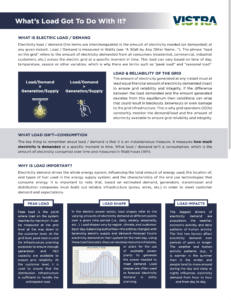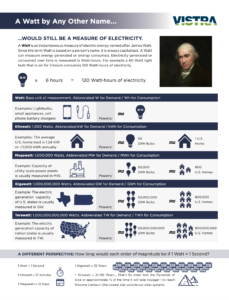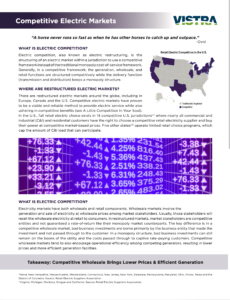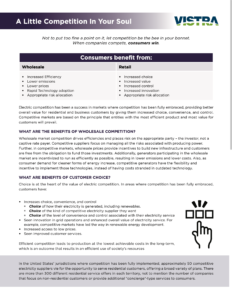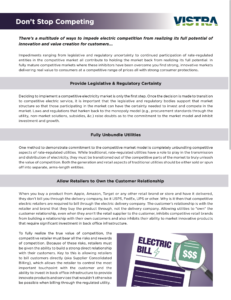WHAT IS THE GRID?
The Electric Grid, Bulk Power System (BPS), or just the Grid, all refer to the same thing, the infrastructure and operations necessary to keep electricity flowing to the customers who use it. This includes the generation of electricity, the transmission system to transport electricity long distances to areas of load, the distribution system that takes the generated power and distributes it to homes and businesses, and retail suppliers/providers who sell and help schedule the load to their customers.
WHAT IS ELECTRIC LOAD / DEMAND?
Electricity load / demand (the terms are interchangeable) is the amount of electricity needed (or demanded) at any given instant. Load / Demand is measured in Watts (see “A Watt by Any Other Name…”). The phrase “load on the grid” refers to the amount of electricity demanded from all consumers (residential, commercial, industrial customers, etc.) across the electric grid at a specific moment in time. This load can vary based on time of day, temperature, season or other variables, which is why there are terms such as “peak load” and “seasonal load”.
WHAT ARE WATTS?
A Watt is an instantaneous measure of electric energy named after James Watt. Since the term Watt is based on a person’s name, it is always capitalized. A Watt can measure energy generated or energy consumed. Electricity generated or consumed over time is measured in Watt-hours. For example a 60 Watt light bulb that is on for 2-hours consumes 120 Watt-hours of electricity.
WHAT IS ELECTRIC COMPETITION?
Electric competition, also known as electric restructuring, is the structuring of an electric market within a jurisdiction to use a competitive framework instead of the traditional monopoly cost-of-service framework. Generally, in a competitive framework, the generation, wholesale, and retail functions are structured competitively while the delivery function (transmission and distribution) keeps a monopoly structure.
WHAT ARE THE BENEFITS OF COMPETITION?
Electric competition has been a success in markets where competition has been fully embraced, providing better overall value for residential and business customers by giving them increased choice, convenience, and control. Competitive markets are based on the principle that entities with the most efficient product and most value for customers will prevail.
HOW CAN WE ENCOURAGE COMPETITION?
Impediments ranging from legislative and regulatory uncertainty to continued participation of rate-regulated entities in the competitive market all contribute to holding the market back from realizing its full potential. In fully mature competitive markets where these inhibitors have been overcome you find strong, innovative markets delivering real value to consumers at a competitive range of prices all with strong consumer protections.


